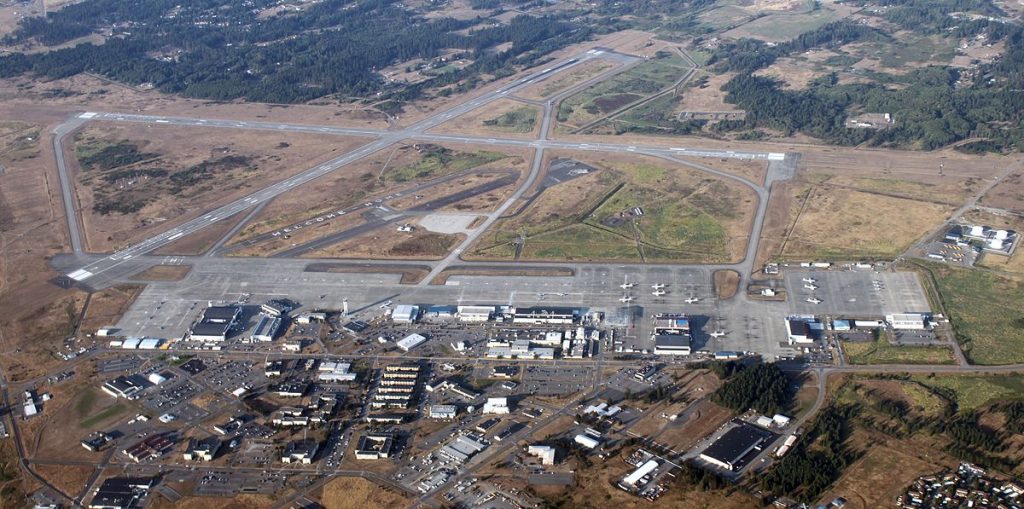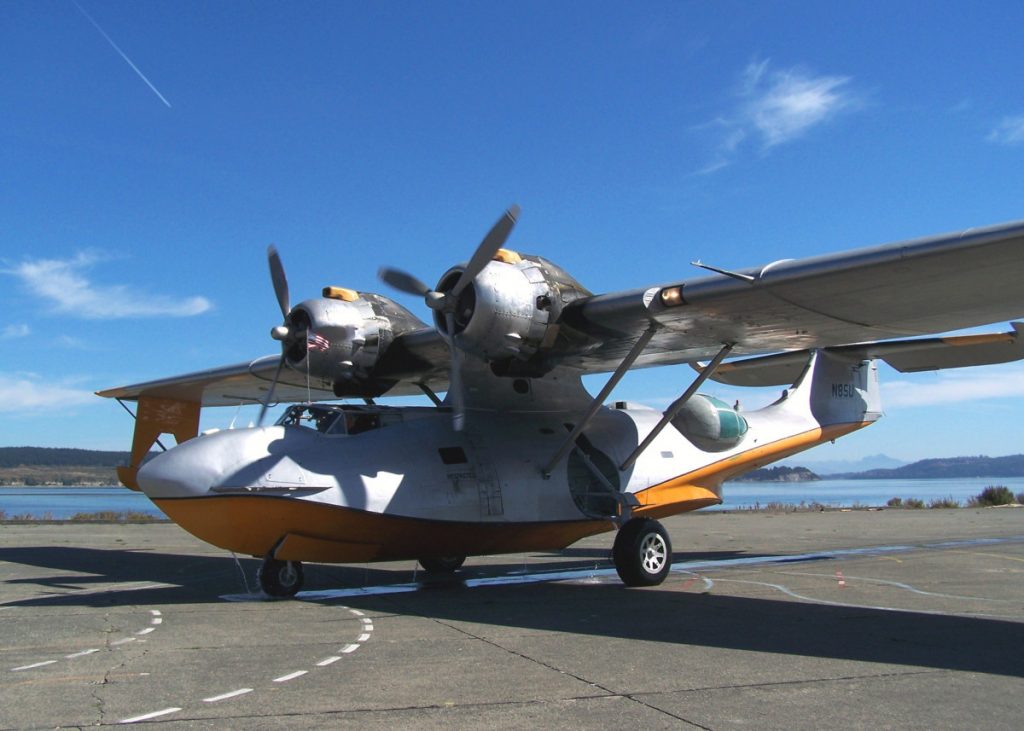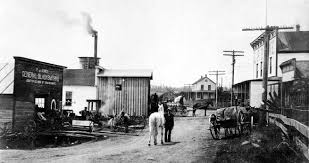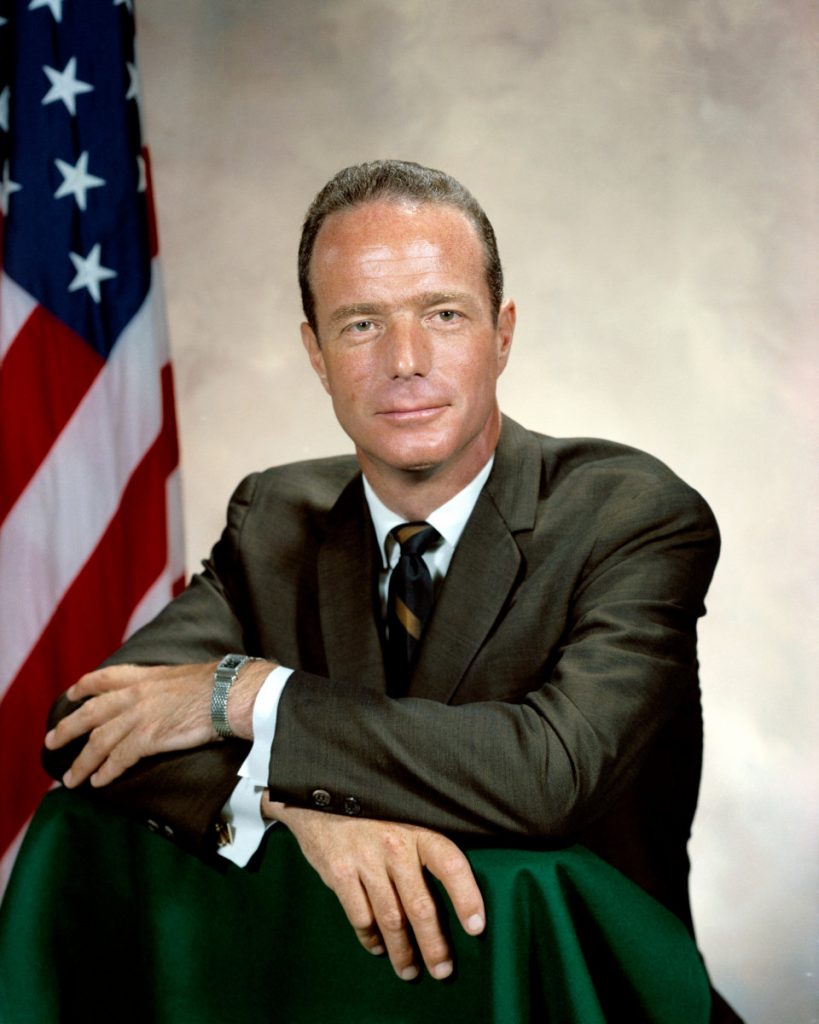
Erik Matsen
Naval Air Station Whidbey Island (NASWI), located on its namesake island in the northern Puget Sound, was officially commissioned on September 21, 1942. Since then it has played a crucial role not only in protecting the Pacific Northwest and West Coast, but also deploying enlisted personnel and aircraft to the frontlines of every war since World War II.
NAS Whidbey Island has also played key roles in peacetime both at home and abroad, and has been home to many air divisions and aircraft, as well as to many pilots who have had successful careers, even being the former station of several NASA astronauts (Stein 2017). The Navy installation has had many successes in its time and had many controversies as well.
NAS Whidbey Island is the current incarnation of military presence on the island, but it is not the first. Many different bases and settlements have existed since the initial incursion of western settlers and explorers into an area that was inhabited by many different Indigenous nations.
First Peoples, Western Incursions, and Militarization
Before the arrival of the first Europeans, Whidbey Island had been home at different times to many different Native tribes including the Swinomish, Snohomish, Suquamish, and Lower Skagit (WhidbeyIsland.us). Starting in the late 18th century, first the Spanish, and then the British, explored the northwestern coast of North America, including Puget Sound.
The first known European sighting of Whidbey Island was during the 1790 Spanish expedition of Manuel Quimper and Gonzalo Lopez de Haro on the Princesa Real. The Island was fully explored in 1792 by Captain George Vancouver. In May of that year, Royal Navy officers and crew members Joseph Whidbey and Peter Puget, began to map and explore the areas of what would later be named Puget Sound. After Joseph Whidbey circumnavigated the island in June 1792, Vancouver named the island in his honor (WhidbeyIsland.us).
Captain George Vancouver declared possession of the entirety of all the Pacific Coast (including the Puget Sound) for the British Crown. The seizure of Indigenous lands continued as American settlers encroached on the most fertile tribal land. By 1855, Territorial Governor Isaac Stevens was aggressively making all Washington tribes sign treaties to be removed from their lands and put into designated reservations. While the Upper Skagit tribe, which was separate than Lower Skagit on Whidbey Island, were invited and signed, no delegation from the Lower Skagit were invited to the treaty signing.
At the time, there were around 300 Whidbey Skagits. Their numbers had once been greater, but like all the tribes, they suffered losses from small pox and other diseases for which they had little immunity. They did not send a representative because they were not invited to the meeting. Stevens did not understand until later that the Whidbey Skagits were a different tribe from the mainland (Upper) Skagits. When he discovered the error, Stevens sent a representative to Whidbey to find a native to sign the paper. Someone signed. Not understanding the intent of the paper, and having had no discussion in the tribe, the Whidbey Skagits argued with the government for years with no success. Since they had been given no reservation of their own, they were transferred to the Swinomish Reservation. Today their descendants are part of the Swinomish Tribal Community (Historywhiz.org).
In 1890, 100 years after the Spanish expedition of Quimper and López de Haro, the U.S. Army began construction of Fort Casey on the southwestern coast of Whidbey Island as part of a three-point defense system for the entrance to the lower more populated Puget Sound (along with Fort Worden and Fort Flagler on the opposite side of the Sound). This base was later decommissioned after the end of World War I.
New Forms of Warfare

The United States Navy in 1922 commissioned Naval Air Station Seattle to accommodate the new military seaplanes that would be used to protect the West Coast. The “PBYs” were Patrol Bombers built by Consolidated Aircraft (PBY – Naval Air Museum). The trouble with this location was that the city of Seattle was growing around the base, limiting its prospect for growth and armed training. William Stein describes this situation in the introduction to his book Naval Air Station Whidbey Island:
The US Navy’s longtime presence in Washington State came to include naval aircraft when, in 1922, NAS Seattle was commissioned on the shore of Lake Washington. Small in size, and already becoming encroached upon by the city, NAS Seattle’s limitations became obvious when the Navy’s new long-range patrol bomber, the PBY Catalina, arrived there in 1937. The PBY (P for Patrol, B for Bomber, and Y for Consolidated Aircraft Company) was a large aircraft for its era, and capable of carrying a wide variety of ordnance. Though a powerful weapon in the Navy’s arsenal, the PBY’s of NAS Seattle were eventually restricted to flying their missions unarmed due to the residential areas bordering the air base. The air station’s location and size also made it an unsafe place to store that ordinance. To address these issues, Adm. Harold Stark, chief of naval operations, ordered in January 1941 that a “refueling and rearming base” be established in near proximity to NAS Seattle, but in a less densely populated area. After examining several locations, the Navy announced in July 1941 that it had chosen an area on Whidbey Island next to the small farm town of Oak Harbor.The chosen site was the isthmus that ties Oak Harbor to Maylor’s Point. This sandy strip of land separating Oak and Crescent Harbors, both of which would be utilized for seaplane operations, was ideally suited for the Navy’s needs. The news was met with mixed reactions by Oak Harbor’s 350 residents. Many welcomed the economic boost the base would create, but they also knew their quiet way of life was soon to end, and for the farmers whose property would be needed, that meant leaving the land they loved (Stein 2017).
In the following three months, plans for the rearming and refueling base had expanded to include both a seaplane and a separate land-based aircraft base. This meant that there was not viable land in the same area for both the seaplane harbor and standard runways. A topographic survey completed in December 1941 found a location for a new airfield at Clover Valley (Naval Technology 2015).
The December 1941 Japanese attack on Pearl Harbor spurred even more haste into the construction of the bases, which involved the need for a large workforce made up of both military personnel and private citizens. The airfield itself was finished within four months, and the first plane landed on the newly built runways on August 5, 1942. A huge influx of military personnel followed. The largest group of sailors who came in were survivors from the aircraft carrier USS Yorktown, which had been sunk a few weeks earlier at the Battle of Midway (Stein 2014). The American flag was officially raised with a full honor ceremony in September 1942.
On September 21, 1942, Captain Cyril Thomas Simard stood on the steps of the brand-new Building 12 and read orders officially commissioning Naval Air Station Whidbey Island and, in Navy parlance, ‘the watch was set’. A year later, the airport was named Ault Field in memory of Commander William B. Ault, missing in action at the Battle of the Coral Sea in 1942. The seaplane base saw its first Catalina in December 1942 and Ault Field became a training base for crews of Wildcat and Hellcat fighters, Ventura patrol bombers, and dauntless dive bombers. Catalina and Mariner flying boats flew out of the seaplane base. The seaplane base closed in the late 1960s and became Navy family housing (Wilma 2007).
NAS Whidbey Island would go on to supply a substantial number of the fighter planes and bombers fighting the Japanese in the Aleutian Islands of Alaska, and in bombing campaigns against the northern islands of Japan. Many of the pilots who were sent on these missions never returned (Stein 2017).
After World War II ended in 1945, the future of the base was uncertain and many feared that it would be decommissioned, as had so many others bases that had sprung up during the war. The base no longer met the requirements for length of runways needed for the new generation of fighter planes and jets. This combined with the drastic downsizing in U.S. military operations seemed to be the end of the flourishing base.
New Conflicts
In 1949, the Navy announced that NAS Whidbey Island would remain open. With the beginning of the Cold War with the Soviet Union, it was decided that the base had adequate room for runway expansion, and was chosen to be the primary naval air station in the Pacific Northwest. Needed expansions and modifications were greatly sped up due to the U.S. entering the Korean War in 1950. The war also led to an influx of new squadrons arriving at Whidbey Island while others were being shipped out just as fast. After the Korean ceasefire in 1953, the base size swelled with the return of deployed men and aircraft.
When the U.S. war in Vietnam began in 1964, the base was already working on another large expansion. Now with the beginning of another Asian conflict, NAS Whidbey Island would return to its previous place of prominence for the Navy.
Whidbey aircraft were once again on the frontlines; whether they were deployed to Vietnam or to carriers, the planes and personnel of NASWI were among the first to go to the new war in Southeast Asia. Even while this was going on, new plans for Whidbey were in the works. A chapter of Whidbey’s history ended when the P5Ms of VP-47 were retired in 1965. It was especially poignant in that their departure marked the end of Whidbey’s original mission as a seaplane base (Stein 2017).
Continued Operations

After the end of the Vietnam War in 1975, NAS Whidbey Island continued to play an integral part in naval operations on the West Coast. But as the Cold War drew to a close and eventually ended in 1991, it looked as if the base would finally be decommissioned. The Navy decided to keep the base open, and decided to keep the entire West Coast fleet of the P-3 Orion anti-submarine patrol aircraft stationed at the base.
With turmoil in the Middle East in the late 20th century and early 21st century, NAS Whidbey Island continues to provide personnel and aircraft who have flown numerous missions in Iraq, Afghanistan, and the rest of Southwest Asia. Squadrons of EA-6B Prowlers where stationed at NAS Whidbey Island until their decommissing, and their successor the EA-18G Growler jets continue to deploy currently (See EMR Warfare).
Economic Effects

The economic effects that NAS Whidbey Island has on surrounding communities has been quite positive since the base was first built. Before the Navy was interested in buying the land to build the two bases, most of the few hundred residents had been engaged in farming and logging, and the area had taken a major hit with the onset of the Great Depression. When the Navy announced plans for the bases and time came to break ground, most residents were excited with the influx of revenue that would be coming into the community from both the civilian workers and the government/military. The housing market was also highly profitable.
Oak Harbor, with a population of 365, soon became a boomtown as hundreds of workmen arrived to build the naval air station. The small town’s lack of housing required the workmen-and, later, Navy families-to seek any available shelter. This often meant renting an attic, basement, or even converted sheds, barns, and chicken houses (Stein 2017).
It was estimated that the Navy spent close to $3.79 million in Oak Harbor during construction (Wilma 2007). Navy personnel and their families have continued to build deep economic and community bonds with Oak Harbor. The Navy sponsors many different events throughout the city and personnel continue to help support the economy through the shopping, dining/drinking, and entertainment industries. In military payroll alone, the base contributed $726 million dollars into Island County’s economy in 2011, and $15 million into neighboring Skagit County (MyBaseGuide 2018).
NASWI and NASA
NAS Whidbey Island has a long line of distinguished pilots who have been previously stationed there, including three National Aeronautics and Space Administration (NASA) astronauts, two of whom will always be remembered in ingenuity and tragedy.

The first former Navy pilot from NAS Whidbey Island to be involved in the U.S. space program was retired Navy Commander M. Scott Carpenter, who at the age of 26 spent time as part of the Lockheed P2V transitional training unit stationed at Whidbey Island in 1951 (NASA). In 1958 he was summoned to Washington D.C. from his post on the USS Hornet for an undisclosed reason and upon arrival found out he was chosen as one of 110 military pilots to take the test trials for the newly formed NASA, eventually earning a spot as one of the original seven Mercury program astronauts. Carpenter went on to be the second American to orbit Earth, after John Glenn.

The second NASA astronaut previously mentioned that will forever be remembered in the history of space exploration is Navy Commander William J. McCool.
A self-proclaimed Prowler guy is now a NASA guy, and next fall, in a moment most pilots only dream about, Cmdr. Willie McCool will help steer a space shuttle right out of earth’s atmosphere. McCool, a former pilot at Whidbey Island Naval Air Station, joined the National Aeronautics and Space Administration in 1996. Since then he’s been training non-stop for the ultimate in air travel – a seat in the cockpit of a NASA space shuttle mission (Whidbey Island Times 2001).
Unfortunately, McCool’s last flight would be in 2003, when the Space Shuttle Columbia disintegrated while reentering Earth’s atmosphere. In total, all seven members of the crew perished in the tragic accident. NAS Whidbey Island held a remembrance ceremony on the base grounds.
Many at Naval Air Station Whidbey Island lived vicariously through their former colleague as he piloted the Space Shuttle Columbia 150 miles above Earth. Now they grieve for him and his six fellow astronauts, lost last Saturday when the Columbia broke apart on re-entry. “He was a source of pride and inspiration for all of us here at Whidbey,” base commander Capt. Steven Black said at said at a memorial service Friday. “He showed us the best we can all hope to be.” Hundreds of fellow pilots, friends and some distant relatives gathered in front of the Prowler memorial at the base, dedicated to lost pilots and crew. McCool’s name became the memorial’s 50th (Associated Press 2003).
The third astronaut to have served at NAS Whidbey Island was Captain Gregory Johnson. Johnson served at the base as part of the A-6 squadron from 1984 to 1990 when he retired his commission. Johnson joined NASA in 1998 and was class leader of 31 other astronauts in the program (NASA). Johnson piloted Space Shuttle Atlantis on the last mission to fix the Hubble Telescope in 2009, completely overhauling it in the process.
Current Controversies
Even though NAS Whidbey Island has had a predominately good relationship with its neighboring communities, there have still been controversy. The main controversies has come in the form of noise complaints about Growler aircraft (the loudest aircraft ever manufactured) flying over the communities, and the effects it has on the people and wildlife. The Navy has intended to add to the number of already existing Growler flights from NASWI (GoSkagit.com 2018).
The Navy’s Growler expansion plan has continued to spark debate between the communities and the Navy and both parties have not made an agreement as the Navy continues to push forward with its plans (See Noise Issues). In March 2019, the Navy announced its final decision to add 36 Growler aircraft to NASWI, and direct 80 percent of the field carrier landing practice to Out-Lying Field (OLF) Coupeville (Stensland 2019).
There have also been conflicts over the issues of pollution from toxic chemicals used on base contaminating the groundwater of several regions of the island. These chemicals include solvents, jet fuel, and also carcinogens from fire repellent foam (See Pollution Issues).
Other controversies have stemmed from events such as pieces of aircraft falling from jets while in the air over neighborhoods, such as when three large pieces fell and landed in the town of Arlington in 2003. The pieces fell in a residential street, a golf course, and the local high school property. No one was injured in the incident. The pieces ranged from 4 feet by 6 feet and were determined to come off of a Growler flying above on a practice flight (Associated Press 2003).
In conclusion, NAS Whidbey Island has a rich history that has impacted not just the local surrounding communities, but the nation and world. The base has provided an integral role in naval operations worldwide, and has had an enormous impact on the people and land of Whidbey Island.
Sources
Associated Press. (2003, February 8). NAS Whidbey remembers shuttle pilot. Kitsap Sun.
Associated Press. (2003, November 28). Debris falls from Navy jet over Arlington. Kitsap Sun.
Commander, Naval Installations Command (CNIC). (2017, December 18). Naval Air Station Whidbey wins Installation Excellence Award Again. CNIC Naval Air Station Whidbey Island.
Gray, Tara. (1998). 40th anniversary of the Mercury 7: M. Scott Carpenter. NASA.gov.
HistoryWiz. (2019). Early Whidbey History. History Wiz.
Mitchell, Melanthia. (2003, May 1). Whidbey Planes Deployed in Iraq Return Home. Kitsap Sun.
My Base Guide. (2016, January 4). NAS Whidbey Island History. mybaseguide
My Base Guide. (2018, October 5). NAS Whidbey Island in Island County. mybaseguide
Naval Technology. (n.d.). Naval Air Station Whidbey Island, Oak Harbor. naval-technology.
PBY – Naval Air Museum. (2019). Home. Oak Harbor, Whidbey Island, WA.
Porter, Sarah. (2018, July 4). Navy wants more Growler flights at NAS Whidbey. goskagit.com.
Stein, William R. & PBY Naval Air Museum. (2017) Naval Air Station Whidbey Island. Mount Pleasant, SC: Arcadia Publishing.
WhidbeyIsland.us (2017). A Brief History of Whidbey Island. whidbeyisland.us
Whidbey News-Times. (2001, January 20). Next Stop for NAS Whidbey Pilot: Space. WhidbeyNewsTimes
Wikia.org. (2012, December). Naval Air Station Whidbey Island. military.wikia.com.
Wilma, David. (2007, July 26). Naval Air Station Whidbey Island is formally commissioned on September 12 1942. HistoryLink.
Wilma, David. (2007, July 30). Oak Harbor – Thumbnail History. HistoryLink.
